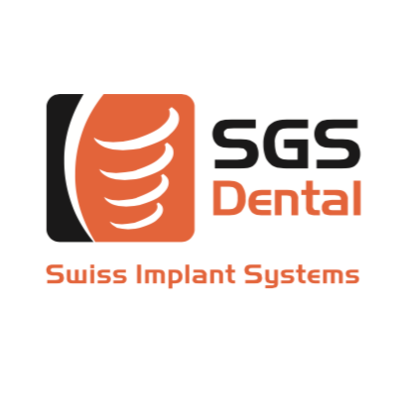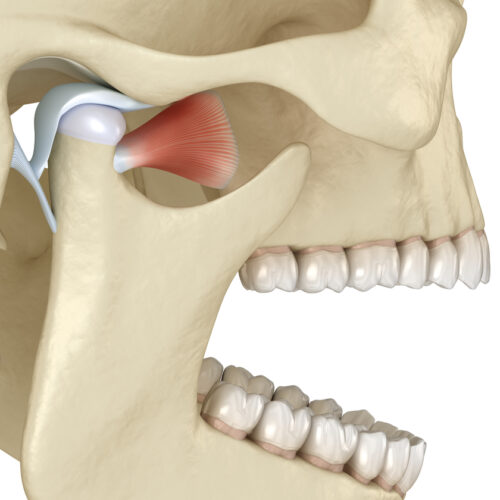Our Copy Wins New
Patients for Dentists
Welcome to Identiwrite Creative, a family-owned dental copywriting agency. Our team of talented professionals help dentists acquire new patients through content marketing and search engine optimization (SEO).
With over two decades of valuable experience in dental marketing, Owner Shauna Smith Duty understands clinical dentistry and technology, dental patients, and online marketing. Shauna personally trains our copywriters, editors, and SEO experts, so they, too, have a solid grasp on dental marketing.
We primarily work with website development companies, DSOs, dental consultants, and marketing agencies.
If you own a dental marketing agency, consultancy, or website marketing firm, we want to become your copywriting resource. White label our products! Avoid in-house employee costs and headaches like management, H/R, and payroll taxes. We will be your copywriting department.
Just read our reviews to see for yourself that we’re competent, efficient, and reliable.
Having worked with many agencies, Identiwrite has developed systems to manage projects and assignments, which allows us to meet deadlines and provide excellent, polished, professional dental copy. We can even interview your clients, if you so choose. Here’s what we want to do for you:

Dental Content Marketing
Experts agree, original, well-optimized content is key to successful online marketing. Google prioritizes informative information, so if you invest in publishing optimized content, your dental clients’ websites will be rewarded with higher rankings and more traffic, which means more new patients for your clients! (We love to make our clients look amazing.)

Dental Blogging
Search-engine-optimized dental blogs boost a website to the top of search for targeted keywords, as well as long-tail keywords that may not have been identified in keyword research. Blogs are indexed quickly by Google, because they’re considered news. Weekly blogging has tremendous effects on a dentist’s visibility and traffic, which naturally leads to more new patient calls!

Dental SEO
In content marketing, dental SEO is imperative! We teach our copywriters the essential elements of on-page search engine optimization, so dental SEO is worked into all the copy we compose for websites, blogs, articles, and social media. SEO is what brings your target patients to your website. The best way to achieve a great SEO strategy is through keyword research; original, well-optimized content; and evaluation of reports month-over-month and year-over-year.

Newsletters & Emails
The cost of acquiring a new patient is well over $200, minimum. For established dental practices, retention is just as important as getting more new patients. Newsletters and email campaigns help dentists stay in front of and in contact with current patients between preventive appointments. This brand repetition fosters loyalty, which keeps patient numbers and profitability up!
MEET THE
TEAM

---------------------------
Shauna Duty has owned two marketing companies, both focused on dental websites and online marketing. Prior to opening her businesses, she worked for a well known dental marketing company in the DFW area. Currently, she owns and manages Identiwrite Creative, working directly with clients, employees, and contractors to provide excellent service.
Shauna has written over one thousand dental websites, articles, and blog posts for dentists in the USA, Canada, and other English-speaking nations. Her expertise in dental marketing has been honed over years of interviewing, studying, and writing about the biggest names, products, technology, and procedures in the dental field. Her articles on dental marketing and blogging have been published on many websites, including Dental Products Report and Modern Hygienist. She also authored a chapter on reputation management for dentists for the ADA Practical Guide to Internet Marketing.
In addition, Shauna has led telecourses, webinars, and conference presentations on Internet marketing. Before entering the dental copywriting field, she was a successful freelancer, with articles published in national and regional print publications and online. Her professional background includes management, administration, corporate vendor show planning, and marketing promotions.
Because of her experience working with medical and dental professionals, Shauna understands dentistry, healthcare, marketing laws, ADA guidelines, and the minds of patients, so she is uniquely equipped to promote your dental practice.
Shauna is the director of a local writers' group, Mustard Seeds Christian Writers. She's also working on a novel, but who isn't?
Shauna and Chris attend North Church in Fort Worth, Tx. They’ve been married for over 26 years. Chris is the general manager of D-Bat, and he lives for baseball. They lend support to Mercy House, a maternity home for single mothers, and Pregnancy Help 4U, a crisis pregnancy center.
Their daughter, Alysen, is the business manager for Identiwrite Creative, and also the mother of their precious granddaughter, Gracie Belle.
Their son, Riese, is a realtor and general contractor in Tyler, Tx. Riese and his wife, Cara, live in Winona, TX. Cara teaches, writes for Identiwrite, and is currently pursuing her real estate license.
Shauna and Chris enjoy talking about Identiwrite Creative’s future while cheering on the Rangers, Cowboys, and Stars, and they make frequent visits to the family farm in Henderson, Tx.

I am privileged to work with a great team that truly puts the customer first and works hard to deliver the best dental marketing to our clients, across the globe. As sales manager for Identiwrite, I am usually the first point of contact for our customers -- which is fantastic since I enjoy people and business so much! As production director, I will say in touch with you from the moment you begin working with us, through all of your projects, year after year.
As you can tell from my last name, I'm a member of the Duty Tribe, the son of Shauna, our owner. My passion is entrepreneurship, so joining the family business is practical and exciting. I have a vested interest in continuing to provide the excellent, five-star service and products Identiwrite has become known for.
The other Duty on the Identiwrite team, Cara, is my adorable and talented wife. Cara and I remodeled and sold a home built in 1905 in Winona, Tx right after we married. After the sale, we bought an RV and travelled the United States for 5 months (during COVID, so it was quite an experience).
Previously, I owned a construction and home remodeling company for five years and I currently hold my Realtor's license. In my free time I love traveling, being outdoors, and spending time with Cara and our two dogs.

When I'm not working, I love doing anything outdoors and being with my husband and family. My husband and I love traveling and just returned from a six-month RV trip. We also have two dogs, Bear and Filly, who we adore!

My family is my treasure. In my free time I love to follow Jesus. I love doing outdoor activities like camping, kayaking, hiking, and skydiving. I love working out specially with my husband, and spending time with my family. Our favorite time of the year is Christmas, and our favorite place to visit will always be Disney.

After getting married, I taught drama and philosophy at my local Catholic school for three years. It was so exciting to teach young minds to appreciate beautiful language and the importance of a good story. Now I’m looking forward to my next adventure as I transition to being a stay-at-home writer and mom to our daughter (due March 2022!)
When I’m not writing, you can find me voraciously reading, hiking, spending time with my husband, or cooking an exotic foreign recipe.

When I’m not busy writing, I’m spending time with my husband and two cats, Nugget and Jellybean. Whether we’re enjoying the outdoors, snuggling on the couch, or cooking gourmet meals, we find time to cherish even the simplest moments in life.

Hi. My name is Joshua. Currently hailing from Delaware, I'm an SEO professional of 13 years with a knack for understanding computer & web technology. Since 2008, I've helped a few dozen businesses find their target customers through Google Search, spanning multiple markets and industries; from USA to Western Europe.
Think of me as a liaison between Googlebot and your business, OR as a "Search Engine Whisperer", who makes sure your website is compliant with Google's guidelines so that you have the best chance to appear in front of your target audience.
I'm a son of former orchestra musicians, a grandson of a guitarist, and nephew to two violinists, so would it surprise you to know that I have a bit of a passion for music? I love all kinds of music, and in fact, it's music that led me into the world of SEO.
I recognized the power of the internet early on and so desired to create a website that would allow me to teach music to others. But I quickly learned that just because you create a website that doesn't mean you'll generate traffic, especially if no one knows your website exists!
So it was time for me to use my special powers to learn everything I could about Google, Bing and other search engines. The rest is history.
Still...for all of the time I spend navigating through html code and computer files, I equally love moments when I can disconnect from the interwebs and just enjoy my time on the beach for a much-needed recharge.

I bring a wealth of experience in crafting user-centric websites. As a proud member of the Identiwrite Creative team, I've honed my skills in various CMS platforms such as WordPress, Shopify, Hubspot, and Marketo. My toolkit includes HTML, CSS, JavaScript, and PHP, and I'm adept at leveraging advanced technologies like Gatsby and CSS frameworks to deliver exceptional and innovative web solutions.
In my journey as a Frontend Web Developer, I've not only mastered the intricacies of coding but also cultivated a passion for creating seamless and engaging online experiences. Whether it's translating a client's vision into reality or staying on the cutting edge of web development trends, I am committed to delivering results that exceed expectations. Let's embark on a digital journey together!


















